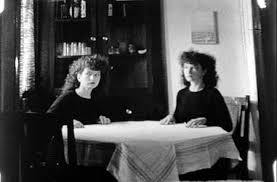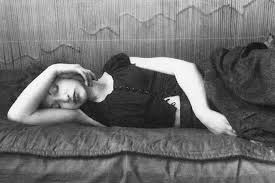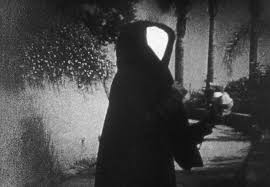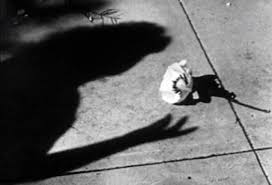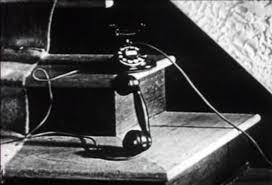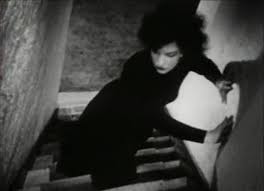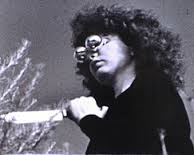Part of an ongoing effort to watch a set of films from non-White, non-U.S., non-male, and/or non-straight filmmakers and depart a little from the Western canon. The intro and full list can be found here.
Maya Deren’s hugely influential 1943 short Meshes of the Afternoon played a key role in kicking off the New American Cinema Group, and has lost none of its power to entrance in the 70-plus years since. Whether taken as feminist allegory, surrealist intervention, cinematic mindfuck, puzzle movie, or Lynchian horror story, it’s impossible to look away. By literalizing the unconscious on film, Deren opened up new possibilities for representation and anti-narrative.
Deren is a fascinating figure in mid-century art, theory, and critique – and one who arguably has never received her due, despite a cinematic lineage that includes such luminaries as Stan Brakhage and Jack Smith. In a short piece, dated 1960 and titled “Some Metaphors For The Creative Process”, she wrote, “The problem of the artist, then, is to rob the vaults only of those riches that are relevant to his need.” In Meshes of the Afternoon, we find her and husband-collaborator Alexander Hammid at the peak of their banditry of the subconscious.
Meshes of the Afternoon seems to tell a story – or perhaps our viewership simply imposes one on the sequence of images, because we expect one to be there. Silent and circular, Deren is much more interested in resonances and magical, Symbolist association than narrative in any traditional filmic sense.
Our protagonist (played by Deren) falls asleep on a couch, shortly after glimpsing a figure on the street. We enter something of a dream-like state. Specific images occur and reoccur – a key, a knife, a piece of bread. A record player spins, though no sound is emitted. A flower becomes a motif. Certain figures play prominent roles, notably a Grim Reaper-like character with a mirror for a face, reflecting nothing.
Deren’s unnamed woman tries desperately to race after the cloaked Death-Mirror-Person, but finds herself in slow-motion, always lagging behind as it turns a cobblestone corner. Suddenly, we cut back to the sleeping Deren, who observes these goings-on from her window. The scenes are repeated from the point-of-view of her double, who seems encased behind the glass of her bedroom window, trapped. Later, there is a tripling, and three Deren’s sit at the kitchen table – surrounding … a key, a knife, a loaf of bread.
Male figures emerge, and it is an open question whether they represent lovers or murderers. When one moves in close to her, we actively wonder if it’s for a kiss or a kill. Deren remains impassive throughout, but her gaze occasionally wanders back to the camera, a look that seems to represent a challenge to the audience. She doesn’t exactly break the fourth wall, but the emphasis on artifice is clear. It’s like the moment in a dream when you realize you are asleep, but powerless to affect any changes in the story your brain, or heart, or something else has in mind.
It’s an aggressively elusive 14 minutes. Like the Surrealists, an association Deren herself rejected but which seems hard to avoid while viewing the film today, Meshes of the Afternoon comes across as fixated on the unknowable, resonant but always out of reach. The initial experience that begins the film is fractured and mediated through all kinds of anxieties and dim connections as our protagonist dozes. She might die, or she might just dream of dying, or dream of a dream. The entire film is an astute exploration of things that can’t be said or explained, but only shown. Like many an experimental filmmaker to follow, Deren swears by the integrity of the image itself … and then seeks to undermine it. There is no ground to stand on in this realm. As in Cocteau’s Orphic Trilogy, we float through instead, prisoners to the camera lens.
You could go on forever about the meanings buried in this particular text. It invites and eludes analysis. Watching it for the first time recently, I was enraptured by the movements, repetitions, and score, which punctuates scenes rhythmically. Does Deren’s character’s encasement in glass seek to comment on patriarchy? Or on the various gazes that constitute viewership (and, so, patriarchy)? Is theorist Wendy Haslem right that, “As European émigrés, Deren and Hammid invest their film with an acute sense of restlessness and alienation … reflect[ing] this uncanny estrangement in the doubling, tripling and quadrupling of its central character … and in its cyclic narrative, a structure that seems condemned to repetition”? Are we dealing with Nietzsche’s notion of eternal return? Why is the hooded Death figure constructed as a kind of mirror? What would the key unlock?
But, like waking from a dream, it all blurs together into a mood, a sense of the uncanny, and no answers are provided. Unlike a dream, Meshes of the Afternoon is 14 minutes you can play back if you so choose, and wonder at it all over again.
Next up: Kôzaburô Yoshimura’s The Ball At The Anjo House (1947)


